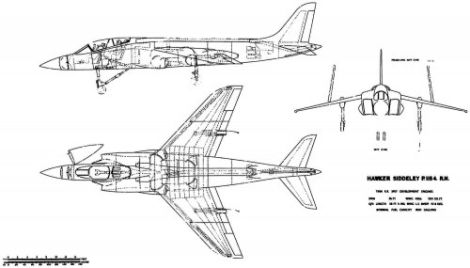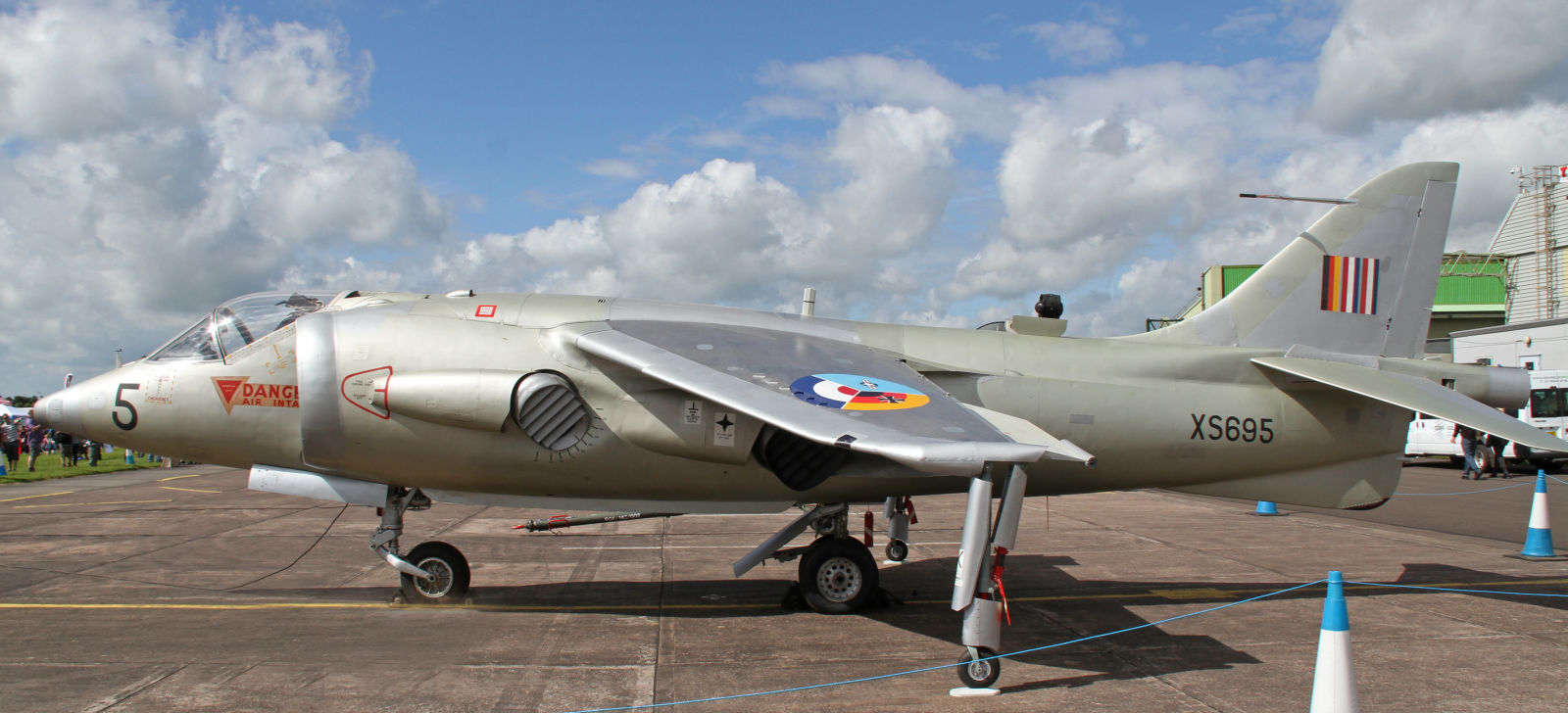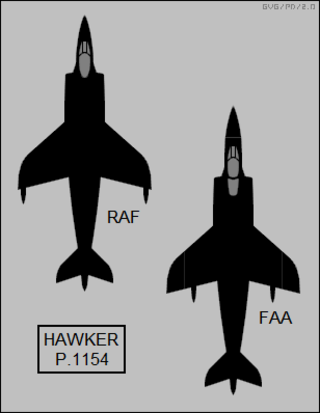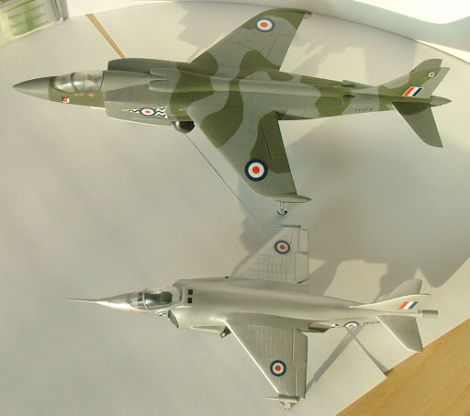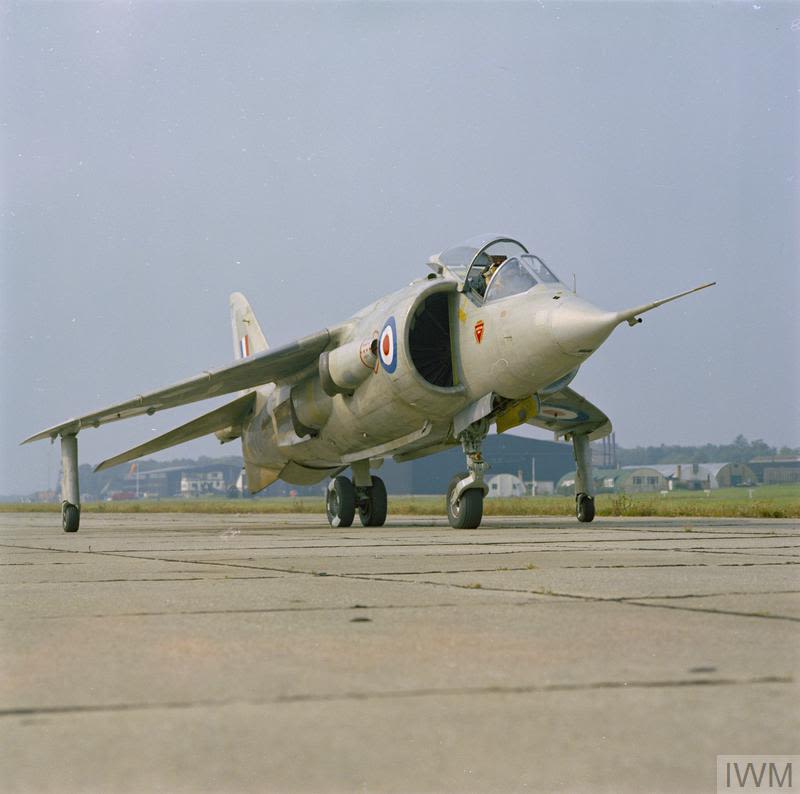
Beginning in 1957, Bristol Engine Company began development work on the Pegasus engine, which, instead of one exhaust, featured four sets of smaller nozzles, the forward two for bypass air, the aft two for hot exhaust, on the side of the engine that could swivel through about 100°, from straight back to slightly forward of down. This arraignment would, theoretically, allow VTOL flight under a concept known as thrust vectoring.
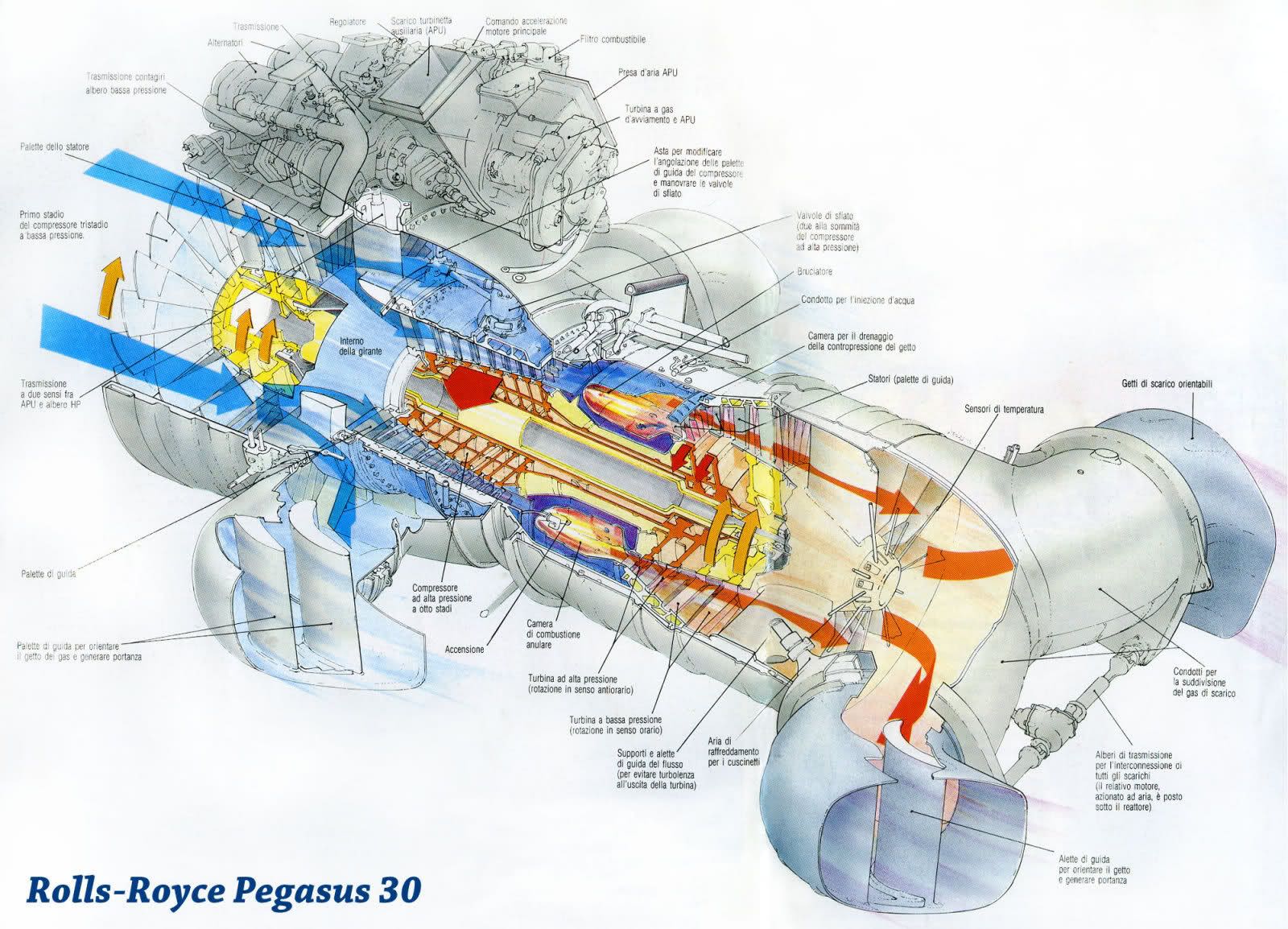
Taking advantage of this new powerplant, Hawker Aviation (later Hawker Siddeley) began working on a new VTOL design, referred to as the P.1127.
On 21 October 1960 the first P.1127 began tethered test flights at Dunsfold Aerodrome, with the first free-flight hover occurring on 19 November.
Prior to the first flight, (Bristol jet engineer Stanley) Hooker is claimed to have asked of (Hawker aircraft engineer Sydney) Camm “I suppose you are going to do some conventional flying first Sydney?” and Camm replied “What for?” Hooker said “Well you know, just to make sure the aeroplane is a nice aeroplane, and everything under control.” Camm replied, “Oh, Hawker aeroplanes are always beautiful, nothing wrong with a Hawker aeroplane, not going to bother with that. Vertical first time”.
On 13 February 1961, the prototype completed its first conventional flight, followed by its first transition from hover to horizontal flight in June. Three additional prototypes were introduced into the test program, incorporating improved Pegasus engines and aerodynamic modifications, including a taller tail fin and anhedral droop on the tailplane which would feature on the later production models, and a sweep on the trailing edge of the wing.
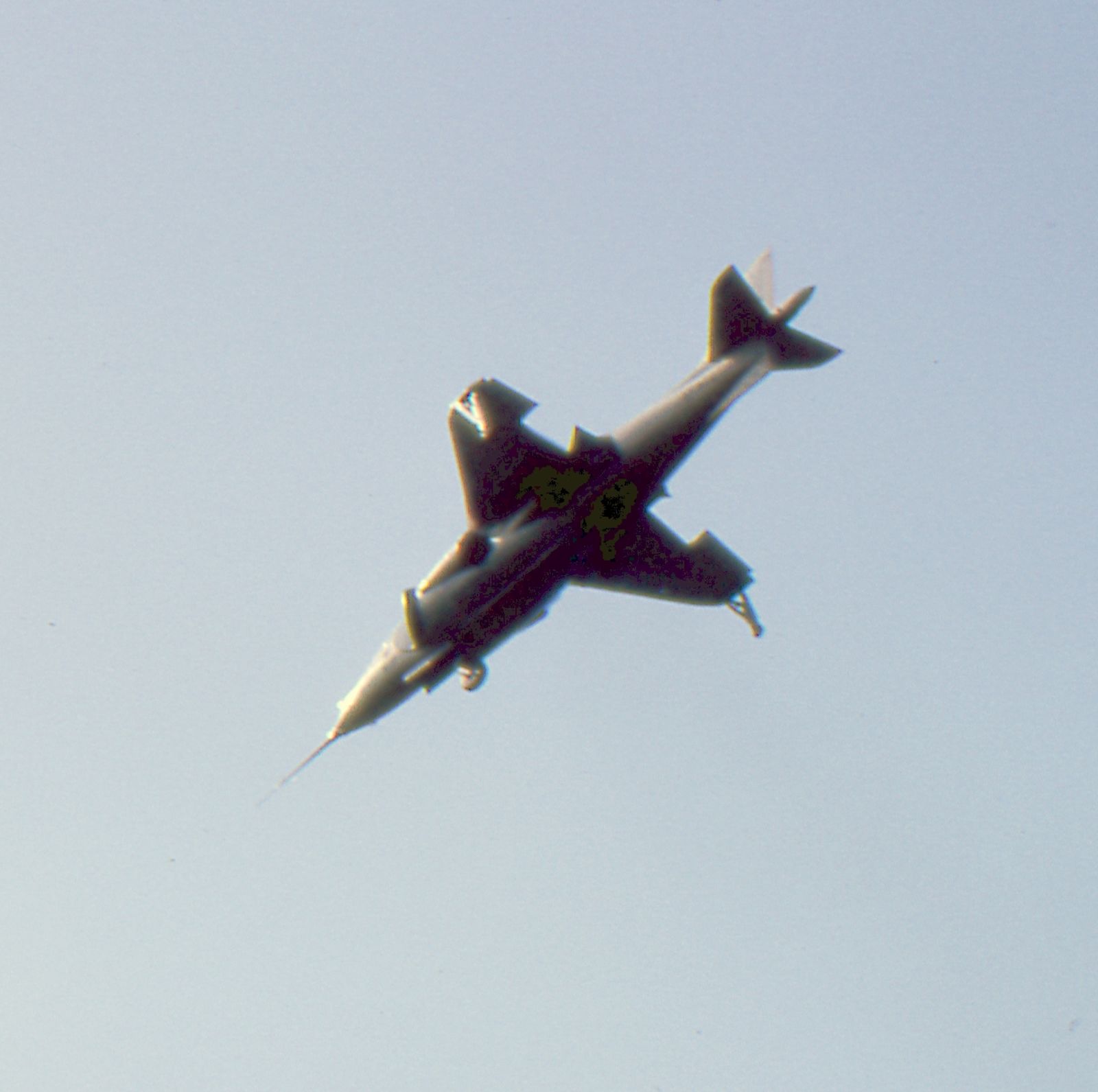
The first prototype performed the first landing on the aircraft carrier HMS Ark Royal in 1963, providing a glimpse of things to come. The first three P.1127s crashed, the second and third during flight testing, and the first at the 1963 Paris Air Show, a victim of FOD in the nozzle control motor.
Fortunately, all of the pilots survived their accidents, and the first aircraft was repaired to continue development. The fourth P.1127 incorporated all the lessons learned on the first three, including the swept trailing edge and the newly developed Pegasus 5 engine, capable of producing 15,000lbf of thrust. This aircraft served as the prototype for the Kestrel FGA.1, nine of which were ordered for the Tri-partite Evaluation Squadron (TES), made up of personnel from the UK, US, and West Germany. Formed in 1964 at RAF West Raynham, the TES evaluated the suitability of V/STOL aircraft for field operations, compared competing styles and methods of taking off and landing, developed normal flight operating procedures, performed instrument flight assessments, conducted night flight operations, and explored jet-borne maneuvering throughout the Kestrel’s flight envelope. During these trials, pilots proved that a short take-off (STO) was useful in increasing the amount of fuel and weapons that could be carried, with a vertical landing at the end of a mission. One aircraft was lost during the evaluation when the pilot attempted an STO with the parking brake left on. After the TES ended operations in 1965, six of the surviving Kestrels were transferred to the US as XV-6A Kestrels for evaluation by the Army, Navy and Air Force. Two were later bailed to NASA for further testing. One of the two Kestrels that remained in the UK was attached to the Blind Landing Experimental Unit (BLEU), while the other was refitted with the Pegasus 6 engine for testing.
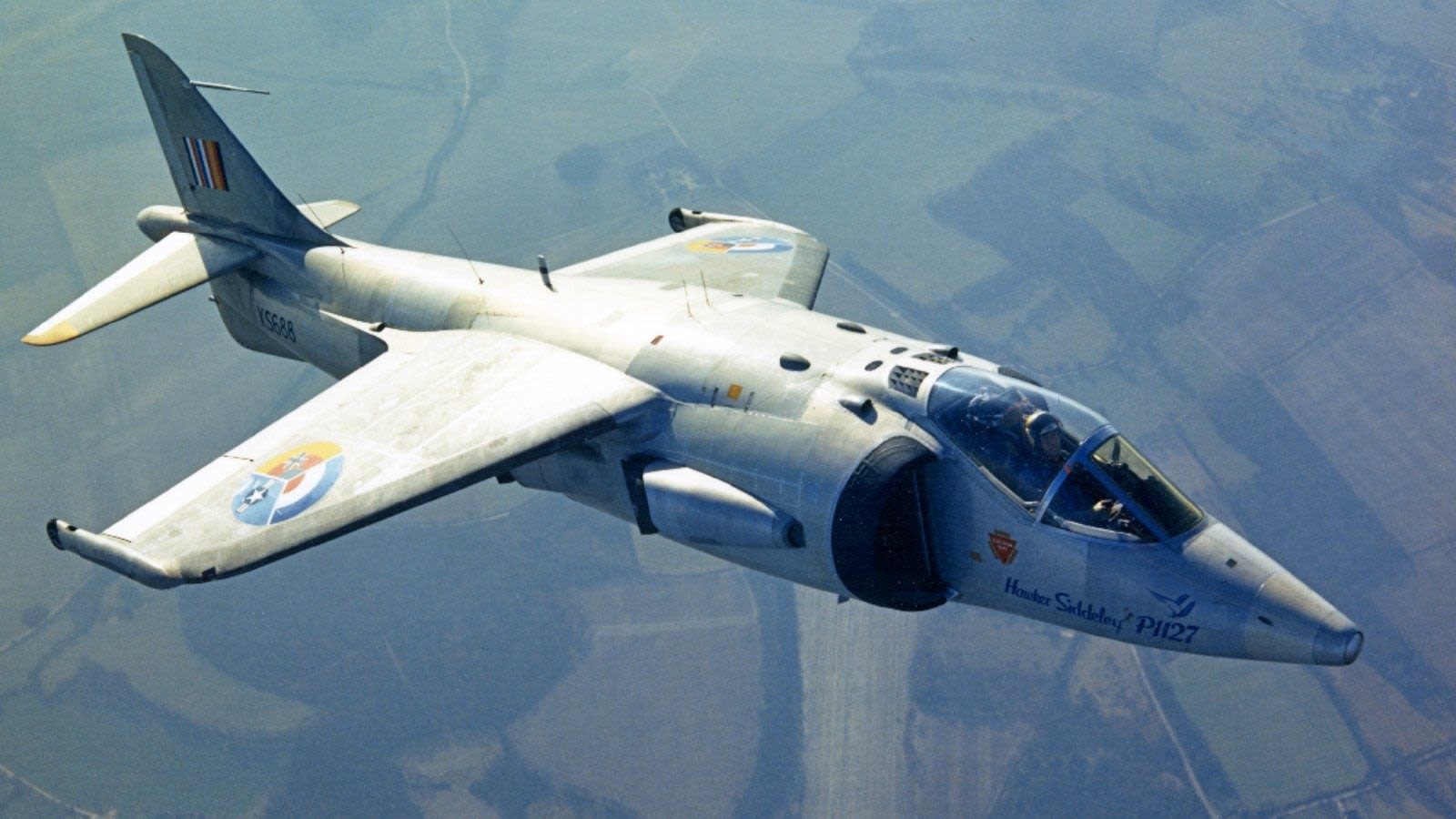
Following the work done by the TES, Hawker Siddeley and Bristol began work on the P.1154, a supersonic follow-on to the Kestrel KGA.1. Key to the P.1154's expected Mach 2 performance was plenum chamber burning, essentially an afterburner for the front (bypass) nozzles, which would have increased the available thrust. The plane would have been broadly similar in shape to the Kestrel, though larger, and was to be produced in a strike variant for the RAF and a two-seat air-superiority variant for the Royal Navy’s Fleet Air Arm.
Friction due to the competing requirements of the RAF and FAA, contracting defense budgets, and the perceived increased importance of the TSR program resulted in the P.1154 being canceled. As a result, the FAA instead acquired McDonnell F-4 Phantoms, while the RAF, hit with the cancellation of the TSR, proceeded with development of a subsonic strike aircraft based on the P.1127.
